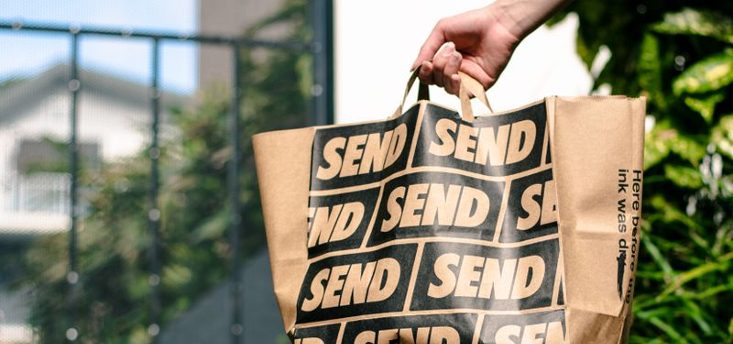
Source: sendapp.com.au
The recent collapse and closure of two startups in the rapid grocery delivery market shows the space is consolidating. The question now is whether it will evaporate entirely.
SEND, which promised deliveries in 10 minutes from dark stores in Sydney and Melbourne fell into voluntary administration last week, while Quicko, which offered a bigger range of products for delivery within two hours, closed in mid-March.
Both startups were founded during the pandemic and had raised venture capital to get off the ground, joining competitors like Milkrun and Voly to win over customers increasingly looking for fast and convenient food options.
Professor Gary Mortimer, a retail and consumer behaviour researcher from the Queensland University of Technology, understands why entrepreneurial types have been keen on rapid grocery delivery startups in recent times. But he’s also unsurprised the field is now thinning out.
“Undoubtedly, there was a market for groceries to be home delivered quickly during the pandemic,” Mortimer observes.
“Even when they weren’t overwhelmed with orders from new customers, the big retail players couldn’t deliver within a matter of minutes, or even a matter of hours, during the lockdowns. I can see why those behind SEND, Quicko, Milkrun and Voly thought they were onto a winner. But the economics of rapid grocery delivery were always going to be tricky. They’ve become trickier now shoppers aren’t worried about entering brick-and-mortar outlets.”
As the founders of their Australian imitators were no doubt aware, scores of ‘grocery delivery in 15 minutes’ startups have launched in cities around the world. Many soon tanked, but at least some of them look promising.
However, as Mortimer points out, delivery businesses operating in inner-city Sydney and Melbourne face particularly bracing challenges.
“First, Australia has relatively high minimum wages,” he tells SmartCompany.
“Second, while the inner-city real estate required for a network of ‘dark stores’ is costly in all cities, it’s especially expensive in Sydney and Melbourne. You add onto that high fuel prices and it’s tough to eke out a profit delivering $30-$40 of groceries.”
Indeed the only way to make rapid grocery delivery work is by charging hefty delivery fees or adding hefty margins on the items delivered, or doing a bit of both. But it seems none of the Australian startups wanted to slow their customer acquisition efforts by doing this.
“In inflationary times, even well-heeled consumers don’t want to pay over the odds for their groceries,” Mortimer observes. “So as a ballpark figure, I’d imagine these startups would need to be charging a $10-$15 delivery fee to have any hope of breaking even. But SEND, for instance, was charging only a $3 delivery fee.”
Does this mean the well-capitalised likes of Milkrun and Voly face a similar fate to SEND and Quicko?
Mortimer isn’t writing them off, but neither is he bullish.
“On one side, you’ve got Coles and Woolworths,” he said. “They are determined to protect their market share and are investing heavily in developing the infrastructure to deliver within a couple of hours. On the other side, you’ve got the meal-delivery businesses like DoorDash and UberEats dabbling with grocery deliveries.
“Possibly there’s space in the middle for one or two pure-play rapid grocery delivery businesses. But they have a hard road ahead.”
Handpicked for you

The new way instant delivery startup Milkrun is dealing with social media trolls



COMMENTS
SmartCompany is committed to hosting lively discussions. Help us keep the conversation useful, interesting and welcoming. We aim to publish comments quickly in the interest of promoting robust conversation, but we’re a small team and we deploy filters to protect against legal risk. Occasionally your comment may be held up while it is being reviewed, but we’re working as fast as we can to keep the conversation rolling.
The SmartCompany comment section is members-only content. Please subscribe to leave a comment.
The SmartCompany comment section is members-only content. Please login to leave a comment.